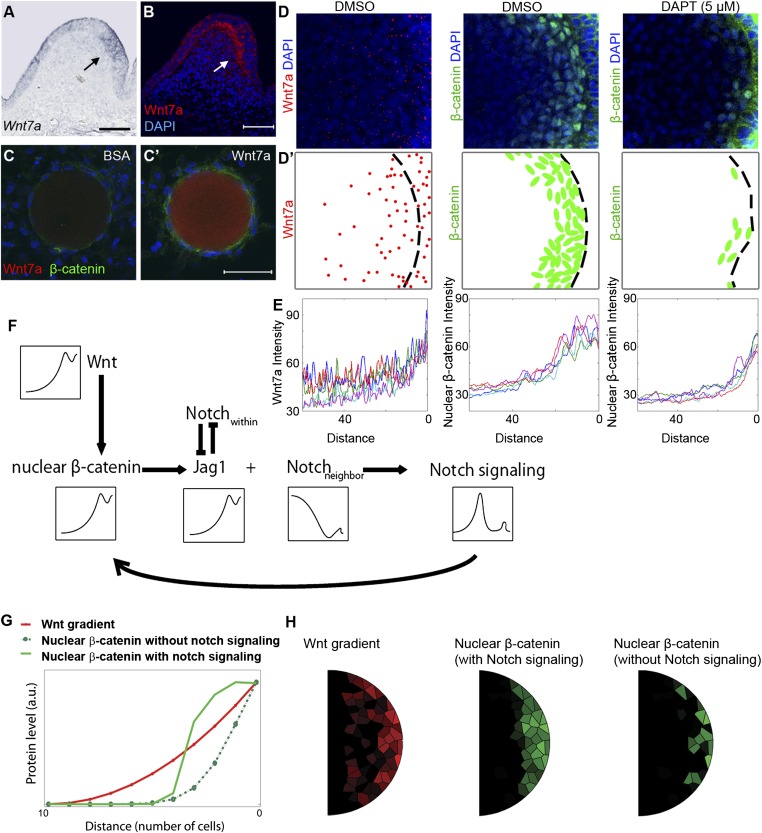Fig. 6.
Mathematical modeling of Wnt–Notch cross-talk simulates the change from a noisy, gradual Wnt gradient to a definitive threshold Wnt response. (A) Section in situ hybridization for Wnt7a (arrow) in feather buds. (B) Fluorescent staining of Wnt7a. (C and C′) Effect of BSA and Wnt7a (0.2 M) soaked beads on E7 chicken skin dermis cultured for 24 h. (Scale bar: 50 μm.) (D) Wnt7a and β-catenin staining in control and 5 μM DAPT-treated feather buds (compact confocal Z-stack pictures). (D′) Schematic summary of D. (E) Wnt7a, β-catenin signal intensity measured from five feather buds for each condition (distance is calculated from the posterior epithelial–dermal boundary to the center of the bud). (F) Wnt–Notch cross-talk relationships used for mathematical modeling. (G) Simulation (1D) shows Wnt–Notch cross-talk can help nuclear β-catenin form an ultrasensitive response to Wnt ligand. (H) Simulation (2D) results.

